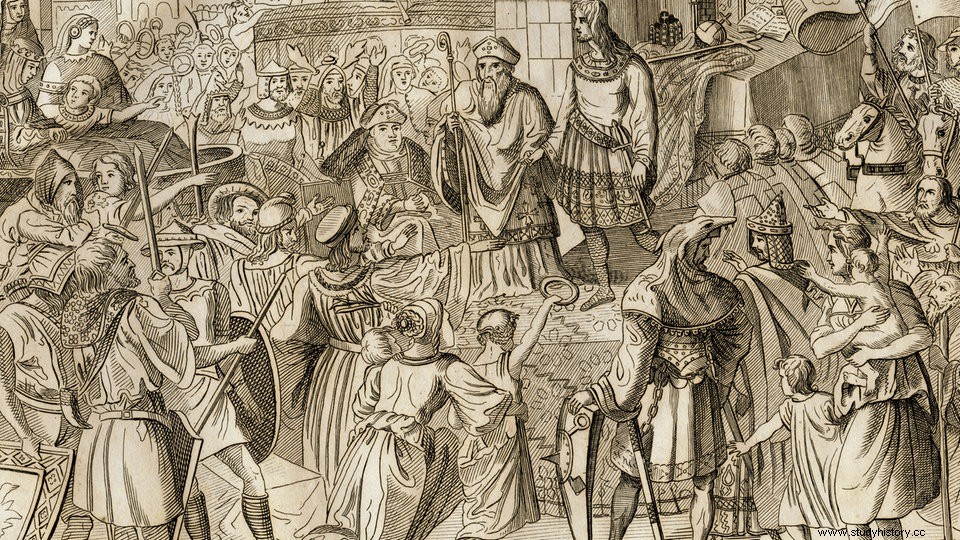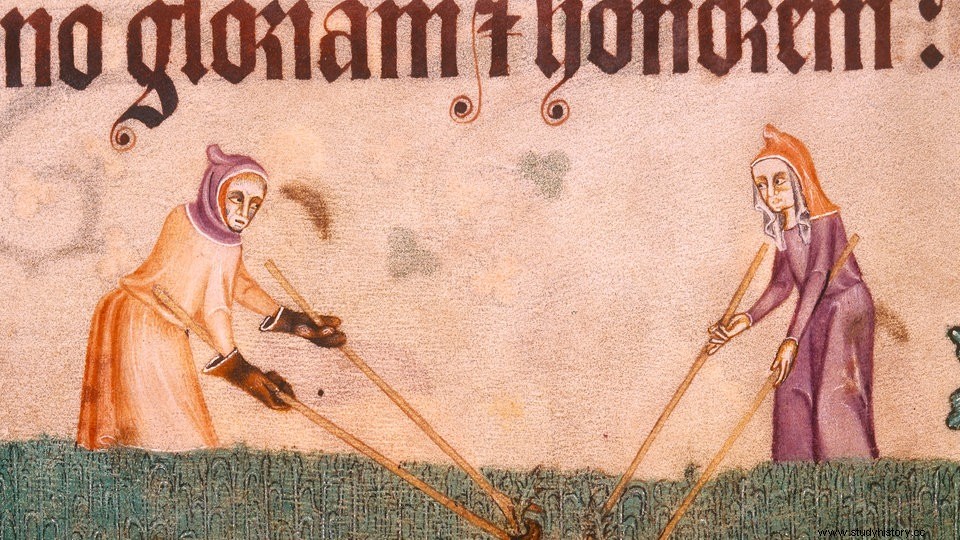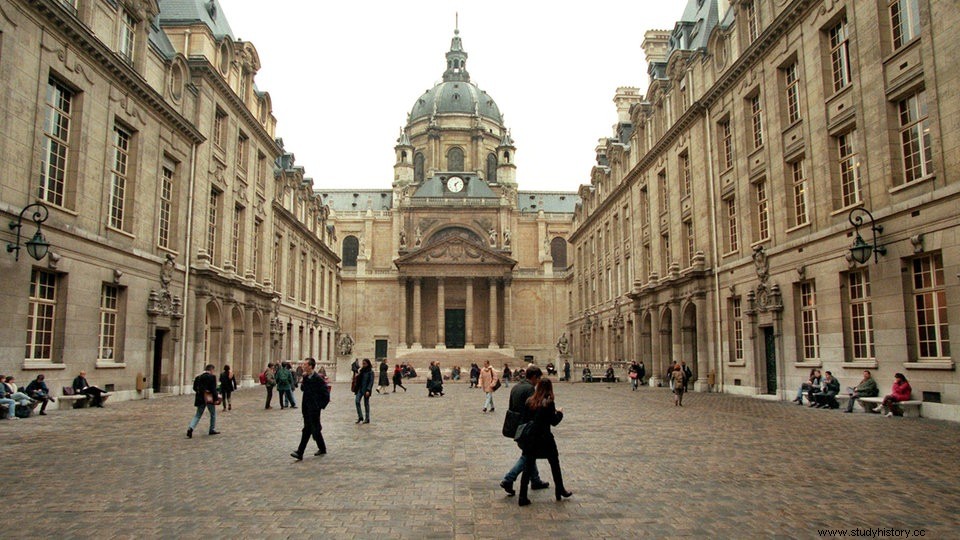The Middle Ages are considered the "dark epoch". War, disease and oppression were not the norm in the roughly 1000 years between antiquity and modern times.
Middle Ages - what's that supposed to be?
Terrible events such as the Hundred Years' War, the Crusades and the plague occurred in the roughly 1000-year period between antiquity and modern times.
But the Middle Ages also stand for pioneering developments on the way to modernity - for example for the founding of the first universities or for the flourishing of cities and thus also for the rise of trade and crafts.
The very term "Middle Ages" is in principle a slander coined by the humanistic scholars of the 15th and 16th centuries. They wanted to distance themselves from the supposedly dark epoch that was now to come to an end in the age of the Renaissance.
Humanists are convinced that in the Middle Ages, the culture and education of antiquity suffered a dramatic decline.
This interpretation, which dismissed the Middle Ages as a gloomy hinge between antiquity and modern times, lasted for several centuries. Today, this period is viewed in a more differentiated way in European historical research, but the name "Middle Ages" has nevertheless stuck.
When exactly antiquity ended and the early Middle Ages began cannot be determined exactly. Key points that are frequently mentioned are, for example, the beginning of the migration of peoples around 370 AD or the fall of the Western Roman Empire in 476.
In the meantime, the view has gained acceptance that antiquity did not end abruptly, but died out in a process lasting several decades, if not centuries. The situation is similar with the transition between the Middle Ages and modern times, which is located at the turn of the 15th and 16th centuries.
The European Middle Ages can be divided into three periods, the beginning and end of which are also disputed:The early Middle Ages, whose most well-known ruler was Charlemagne, lasted until around the end of the first millennium.
The epoch between 1000 and 1250, the time of the knights and crusades, is now referred to as the High Middle Ages, which was finally followed by the Late Middle Ages.
Huge empire with election of a king
Although the Western Roman Empire had disappeared from the map by 476, the glorious Roman Empire remained an important reference point for medieval rulers as well.
The most important political authority of the Western European Middle Ages was an entity that went down in history as the "Holy Roman Empire of the German Nation" from the mid-15th century.
Originating from the East Franconian Empire of Charlemagne, it temporarily included almost all of Central Europe and parts of Southern Europe. In the center of this gigantic empire lay the territory from which the German national state emerged centuries later.
The Holy Roman Empire was not a real entity. Its inhabitants were made up of many peoples, and the variety of languages was correspondingly large. There was neither a central legal system nor a common currency, and the borders of the empire were constantly shifting.
One of the few fixed points of the empire was its ruler, the Roman emperor, who also held the title of king.
The ruler received the imperial crown from the hands of the pope, which repeatedly led to conflicts. Kingship, on the other hand, was not a matter for the Church. Otto I (912-973) had to stand for election to the most important princes of the empire before he ascended the throne.
However, Otto hardly had anything to fear – there was no opposing candidate. From the end of the 12th century, the election of the king was reserved for the German electors, whose number was limited to seven from 1257.

Otto I was crowned Emperor by the Pope in 962
Your status determined your place in life
The guiding principle of medieval life was the estate system, which assigned each person their place in society. Undisputedly at the top was the king, to whom the nobility and the clerical upper class of the empire had to submit.
The next rung on the estate ladder were monks and knights. The profession of knight emerged from the 9th century when warfare on horseback became more important. The soldiers with war horses and armor were extremely important to their warlords, and as a result enjoyed far-reaching privileges.
Knighthood experienced its heyday in the 12th century, but 200 years later the decline of the noble class began. With the advent of mercenary armies and new weapons like the English longbow, knights gradually became irrelevant.
In the Middle Ages, the class of peasants was one step lower. They not only made up by far the largest part of the population, but were also the weakest members of society. However, there were also major differences among the farmers - from free to unfree, from destitute to wealthy.
Vassalage served as a sort of social cement between the individual estates. A member of a lower class was usually a vassal (follower) of a higher rank.
The retainer swore unconditional loyalty and obedience to his master. This included, among other things, that the vassal paid taxes and went to war for the lord. In return, he gave land to his subordinate and protected him.

Farmers formed the lower class
"City air makes you free"
Unless they became monks or nuns, the people of the Middle Ages remained in their status all their lives – advancement was almost impossible. This only changed with the rise of the cities from the 12th century.
If a bonded peasant moved to a medieval town and was not ordered back from there by his master for a year, he was a free townsman. This is where the much-quoted saying "City air makes you free" comes from. In order to savor this freedom and participate in the economic boom, more and more people flocked from the countryside to the city in the High Middle Ages.
The market is considered to be the "nucleus of the high medieval city", as the writer Rolf Schneider puts it. This place, where traders from different regions met, was often the starting point for founding a city. The cities developed into the most important economic centers of the empire, where trade and crafts flourished.
So it is no wonder that one of the most powerful economic associations of the Middle Ages emerged from a merger of cities:the Hanseatic League. At the height of the Hanseatic League - between the 14th and 16th centuries - around 200 cities belonged to it, including Hamburg, Lübeck, Cologne, Dortmund and Berlin.
Holy halls and lovestruck songwriters
From a cultural point of view, too, the Middle Ages were by no means a consistently gloomy time. From the 12th century onwards, the first universities emerged in Europe, for example in Paris, Bologna or Oxford. These sacred halls of knowledge often emerged from monastery and cathedral schools, which until then had usually been dedicated to the education of their own offspring.
The fine arts also experienced an upswing in the High Middle Ages:the songs of love, which were about love with all its trials and tribulations, rang out at princely courts and in cities. Unfortunately, today we only know what a Middle High German Minnelied sounded like. Some texts have survived in German-speaking countries, but hardly any notes.

One of the oldest universities:the Sorbonne in Paris
